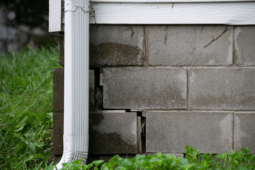9 DIY Myths You Didn’t Know Are False
If you’ve ever tackled a DIY project, you’ve probably heard a lot of “rules” that sound like truth simply because people repeat them so often. But not all common advice holds up when it’s put to the test in real life. Some of it slows you down, costs you more, or even makes your project harder. Once you know which myths to ignore, the world of DIY suddenly feels a lot less intimidating and a lot more fun.
“You Only Need Basic Tools For Most Projects”

Having a hammer and screwdriver feels like a good start, but most projects need a few specialized tools to have everything go smoothly. You don’t need to buy everything, but renting or borrowing the exact tools can make a big difference. The right tool saves time, mistakes, and frustration. You don’t need to have a huge toolbox, but don’t try to just substitute what you have for what you actually need.
“DIY Always Saves Money”

Sometimes you really can save some money, but other times you end up spending more on supplies, tools, or just fixing your mistakes. DIY saves money when you know your limits and choose projects that match your skill level. For complicated jobs, like electrical or major plumbing, hiring a pro can actually be cheaper in the long run. DIY is great, but it’s not always the cheapest route.
“Painting Solves Everything”

A fresh coat of paint can do wonders, but it’s not a magical fix. Paint won’t hide dents, stains, or uneven surfaces unless you prep properly. Sanding, patching, and priming are the secrets to a good-looking finish. If you skip the prep, the paint will only highlight the flaws in the surface. Painting is powerful, but only when you set it up for success with good prep.
“All Wood Is Basically The Same”

Hardwood, softwood, treated lumber, even plywood, all behave differently. Some warp, some split, some soak up paint like a sponge. Using the wrong kind of wood can totally ruin a project or make it fall apart faster. Understanding wood types helps everything fit better, look better, and last longer. The differences matter more than people think, especially for furniture or outdoor builds.
“Measurements Don’t Need To Be Perfect”

The old “measure twice, cut once” saying exists for a reason. Even tiny measurement mistakes can throw off shelves, trim, and frames in a big way. Eyeballing it might feel quicker, but it usually leads to do-overs. Accurate measurement matters because one wrong angle could totally change everything about your project, throwing off a ton of other things down the line. A few extra seconds with a tape measure saves hours of frustration later.
“Duct Tape Fixes Anything”

Duct tape is helpful, but it’s not a miracle worker. It loses stickiness in heat, crumbles outdoors, and isn’t meant to be used for structural repairs. Using it as a long-term fix almost always leads to bigger problems down the line. Real fixes usually involve screws, glue, brackets, or proper replacement parts. Duct tape has its place, just not as the hero product people imagine it to be.
“You Don’t Need To Worry About Studs”

Hanging something heavy on drywall without finding a stud is asking for trouble. Even with fancy anchors, studs give you the strength you actually need. Skipping this step is one of the most common beginner mistakes when trying to mount something on the wall. Stud finders exist for a reason, and once you use one a few times, you’ll realize there’s no reason to skip that step.
“Electricity Projects Are Easy If You Watch A Video”

There’s a reason electricians go through years of training before getting certified. One wrong step can be dangerous to you and your house or cause long-term problems you won’t see right away. Videos are helpful for understanding concepts, but electrical work should be approached with extreme caution. Some minor tasks are doable for beginners, but anything beyond that is best left to a pro. Safety first, always.
“DIY Has To Look Perfect To Be Worth It”

This might be the biggest myth of all. DIY is about learning, experimenting, and growing your own skills. A few imperfections give projects character and great stories to tell about how you make the piece for years to come. Perfection is overrated. Progress feels better. And the little quirks often become your favorite part of the finished project.
Related Articles
-5 Electrical Mistakes Homeowners Make and How to Avoid Them
-Furnace Filter Myths You Didn't Know Are Wrong
-Glass Stove-top Cleaning Mistakes You Don't Want To Make
Letting go of these myths makes DIY less stressful and more enjoyable. You don’t need magic tools, instant skills, or flawless results, just patience and a willingness to learn. When you understand what’s true and cut out the bad advice, every project becomes more rewarding. And honestly, that’s what makes DIY worth doing in the first place.









